Implementation of automation of conveyance tasks that move materials/semi-finished products from the current process (machine/system) to the next process by utilizing either automated or autonomous equipment such as AGV, AMR, and OHT. By applying a system akin to autonomous driving technology, it improves efficiency through optimal route navigation, or following a predetermined path, without separate on-spot guidance and realizes safe unmanned delivery.
| AGV |
AMR |
OHT |
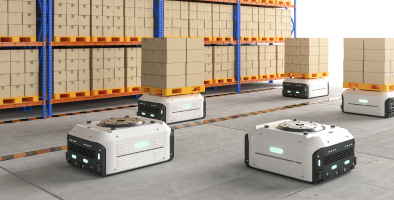 |
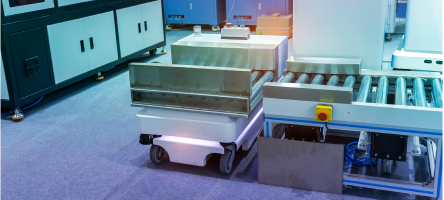 |
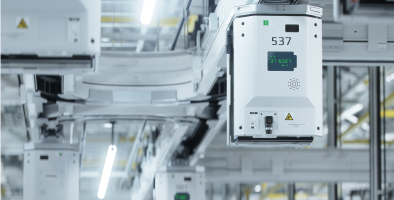 |
|
An unmanned transport machine that travel on predetermined routes to do repetitive tasks
|
A machine that’s not only self-driven, but can also choose optimal route using laser-based navigation and perception algorithms
|
An automated transport system that travels across overhead rails
Maximum utilization of ceiling space
|
-
AGV
An unmanned transport machine that travel on predetermined routes to do repetitive tasks
-
AMR
A machine that’s not only self-driven, but can also choose optimal route using laser-based navigation and perception algorithms
-
OHT
An automated transport system that travels across overhead rails
Maximum utilization of ceiling space
We efficiently implement storage automation in limited areas or spaces by utilizing equipment such as stacker cranes and multi-shuttle. Depending on the size of the product, it is divided into pallet or box type, and the optimal solution is selected and provided allowing for the customer's environment such as storage efficiency and processing volume.
| Pallet Storage Type |
| Stacker Crane |
Shuttle |
 |
 |
|
Handling Bulk Product (Pallet)
Automated palletizing, storage, and retrieval system with crane
High storage capacity in limited space
Crane throughput calculation considering inbound and outbound volume, storage volume, and floor height, etc.
|
Handling Bulk Product (pallets)
System that automatically receives/stores/releases pallets in racks via Shuttle
Maximum storage capacity in the same area
Type selection based on inbound and outbound volume, storage volume, movement, etc.
|
| Box Storage Type |
| Shuttle |
Mini-Loader |
AutoStore |
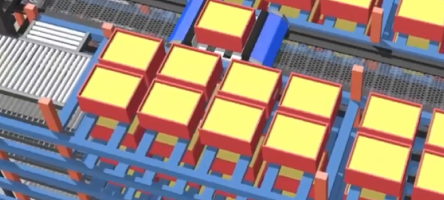 |
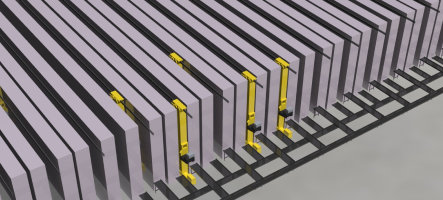 |
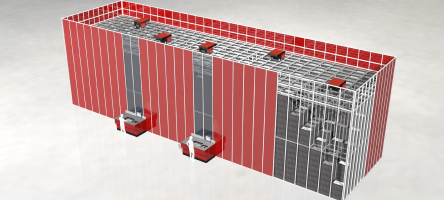 |
|
Handling Lightweight/Low-volume product (Bucket)
Shuttles and lifters enabling automated receiving/storage/retrieval system
|
Handling Lightweight/Low-Volume Product (Bucket)
Mini cranes enabling automated receiving/storage/shipping system
|
Handling Light/Low Volume Products (Buckets)
A system where robots automatically receiving/storage/shipping from the top of the grid
|
Pallet Storage Type
-
Stacker Crane
Handling Bulk Product (Pallet)
Automated palletizing, storage, and retrieval system with crane
High storage capacity in limited space
Crane throughput calculation considering inbound and outbound volume, storage volume, and floor height, etc.
-
Shuttle
Handling Bulk Product(pallets)
System that automatically receives/stores/releases pallets in racks via Shuttle
Maximum storage capacity in the same area
Type selection based on inbound and outbound volume, storage volume, movement, etc.
Box Storage Type
-
Shuttle
Handling Lightweight/Low-volume product (Bucket)
Shuttles and lifters enabling automated receiving/storage/retrieval systems
-
Mini-Loader
Handling Lightweight/Low-volume product (Bucket)
Mini cranes enabling automated receiving/storage/shipping system
-
AutoStore
Handling Lightweight/Low-volume product (Bucket)
A system where robots automatically receiving/storage/shipping from the top of the grid
Warehousing and shipment automation is classified into picking and sorting automation equipment, which utilize picking robots, sorters, and QPS to reduce human error and improve speed and accuracy.
| Picking/Sorting Machine/System |
| Robot Picking |
Sorter (Automatic) |
QPS |
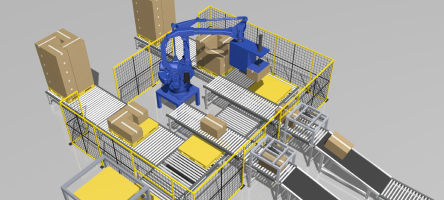 |
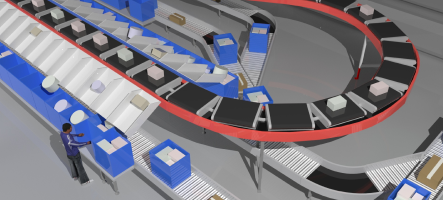 |
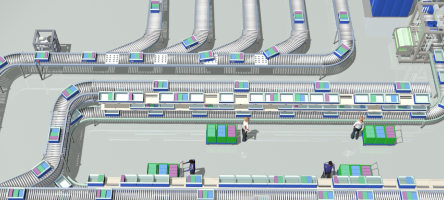 |
|
Automated robotic picking by identifying product characteristics
Applicable to a variety of environments, from small products to boxes
|
Equipment that quickly recognizes barcodes on products and sorts them automatically
Deployment of the suitable type of sorter based on product shape, size, weight, throughput, etc.
|
A system that automatically transports boxes with goods to stations that require picking, and workers pick or sort by checking lighted indicators.
Minimizing worker movements and streamlining work loads
|
*QPS: Quick Picking System
We provide a 3D-based logistics site real-time monitoring/control system, including facility operation status, failure notification, and operation status visualization. (MiiT : Miracom Digital Twin Platform)
The system enables integrated field management from failure detection/analysis/action to real-time status/alarm data.
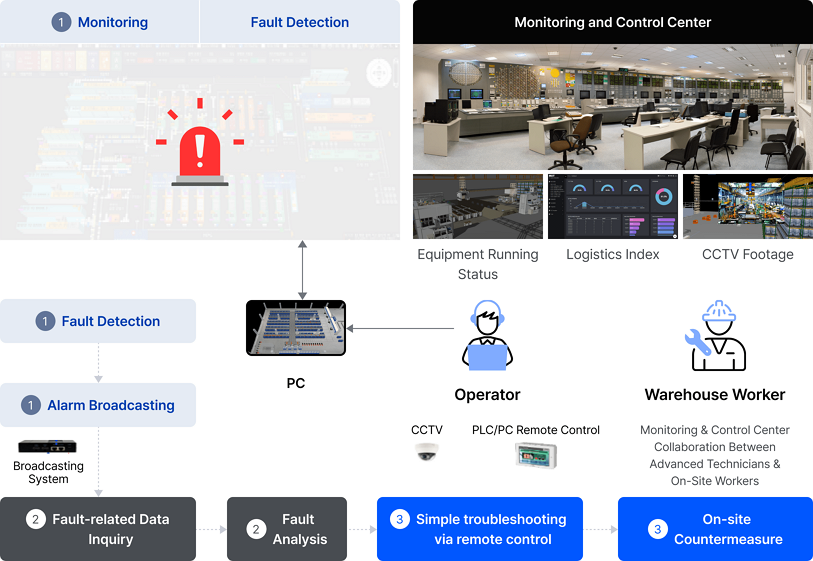
Monitoring Failure Detection Failure Cognition Alarm Broadcasting System Failure-related information inquiry failure analysis Simple action Collaboration on-site action PC operator CCTV PLC/PC remote control control room Advanced technicians & field workers Collaboration control center Facility status indicators CCTV video
-
1Logistics Monitoring
Visualizing equipment uptime, failure notifications, and operational status.
-
2Collection and Analysis of Logistics Movement Data
System and Machine Interfaces
Fault Analysis/Tracking
-
3Intelligent Fault Detection/Countermeasure
AI-based automatic detection utilizing parent system/CCTV
Remote action for simple troubleshooting
Real-time collaboration with warehouse workers
-
1Logistics Monitoring
Visualizing equipment uptime, failure notifications, and operational status.
-
2Collection and Analysis of Logistics Movement Data
System and Machine Interfaces
Fault Analysis/Tracking
-
3Intelligent Fault Detection/Countermeasure
AI-based automatic detection utilizing parent system/CCTV
Remote action for simple troubleshooting
Real-time collaboration with warehouse workers




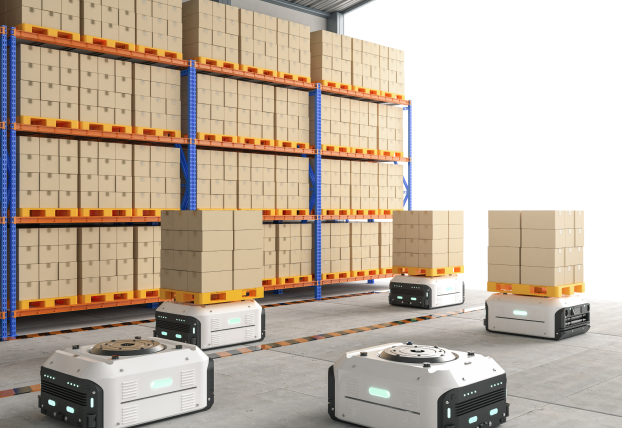
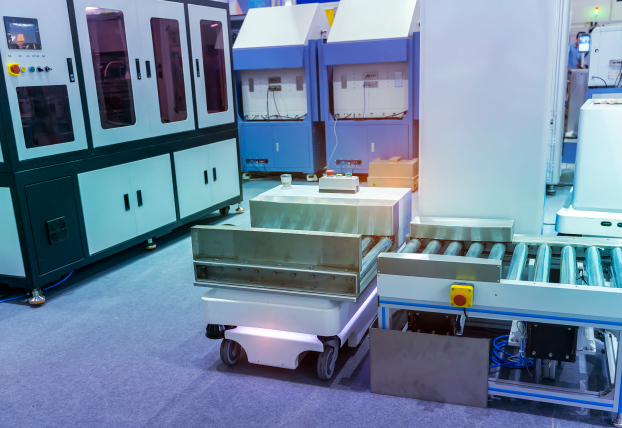
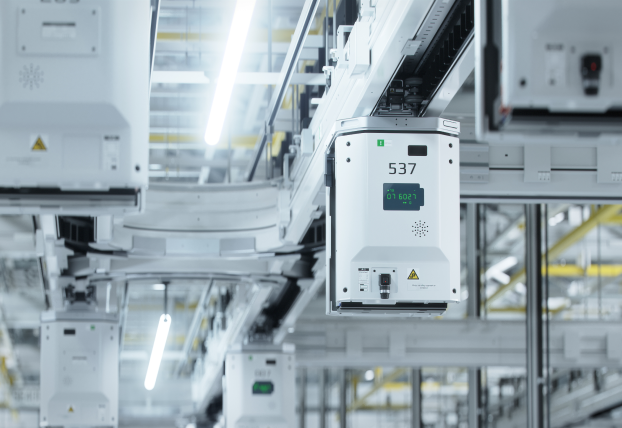








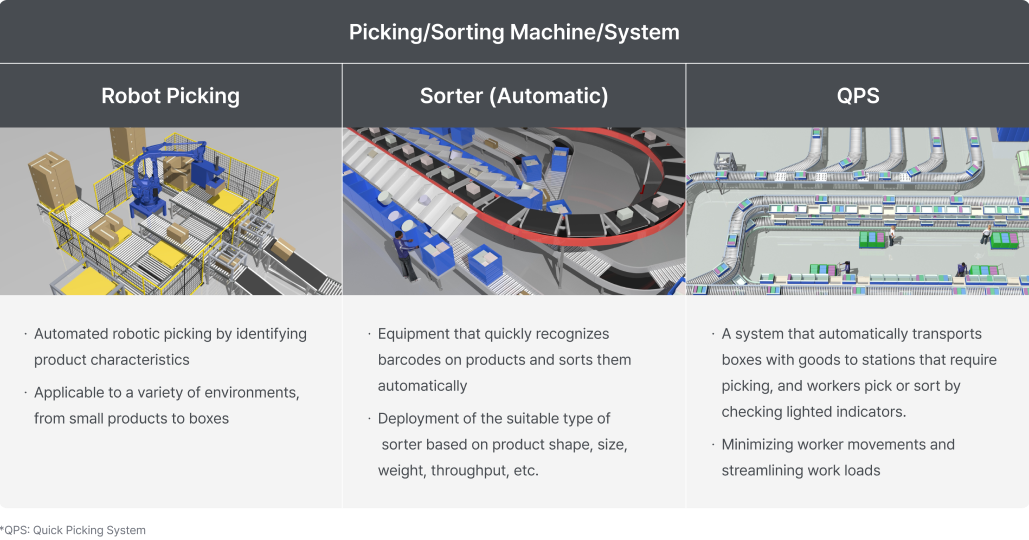

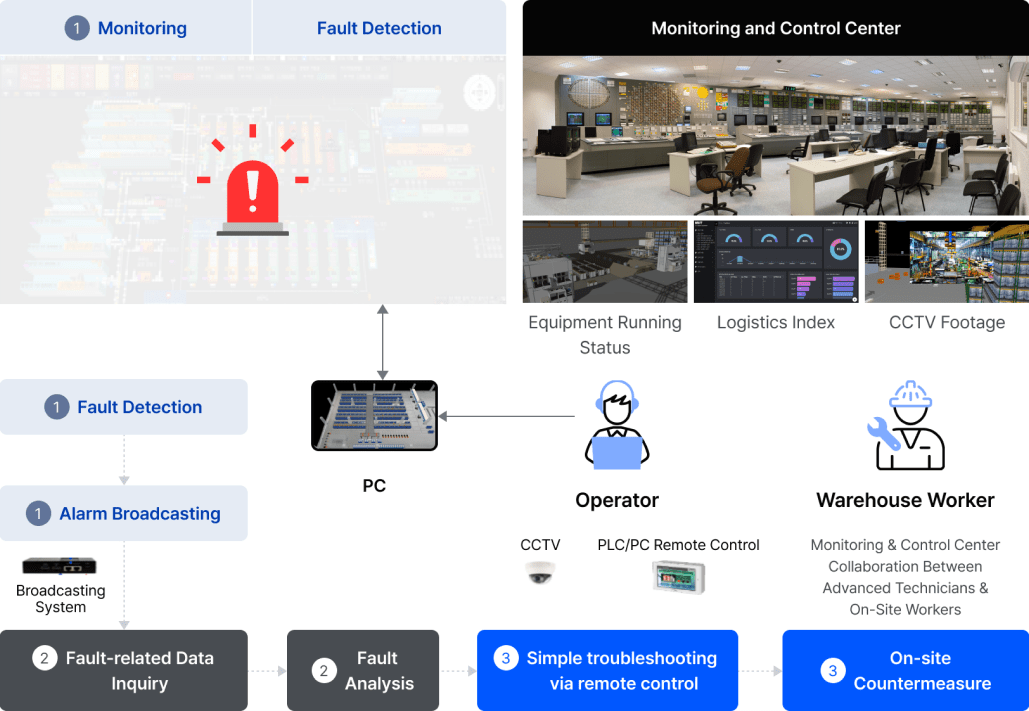



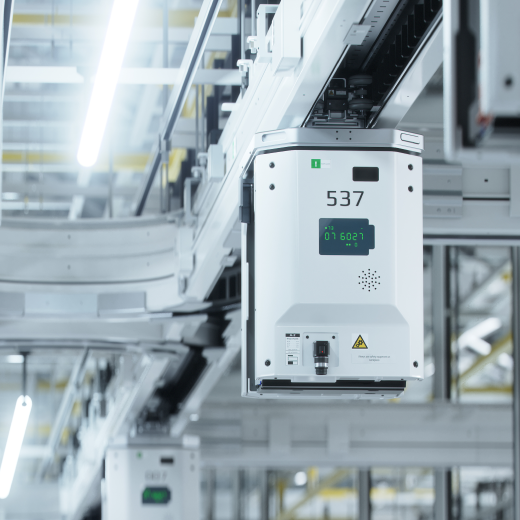 A leading global memory chipmaker needed to maintain a high level of cleanliness when transporting wafers to each process manufacturing machines. To accomplish this, we built an automated wafer logistics system utilizing overhead hoist transport (OHT) facilities. They travel on their own according to the process sequence that each product must go through, and the central system control room handles the OHT routes, times, and movements, providing a bird's eye view of the movements of all OHT devices. The logistics automation system for the semiconductor manufacturing line enabled a smooth process flow, increasing semiconductor quality levels and production efficiency.
A leading global memory chipmaker needed to maintain a high level of cleanliness when transporting wafers to each process manufacturing machines. To accomplish this, we built an automated wafer logistics system utilizing overhead hoist transport (OHT) facilities. They travel on their own according to the process sequence that each product must go through, and the central system control room handles the OHT routes, times, and movements, providing a bird's eye view of the movements of all OHT devices. The logistics automation system for the semiconductor manufacturing line enabled a smooth process flow, increasing semiconductor quality levels and production efficiency.
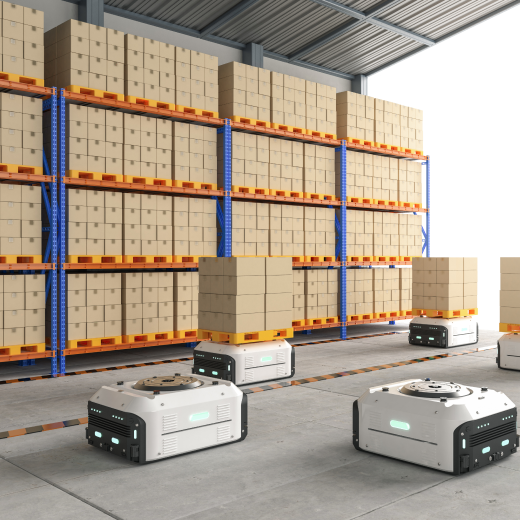 A global secondary battery company had high manpower dependence due to the nature of battery manufacturing and proceeded many manual tasks. To address this, they used autonomous guided vehicles (AGVs) to improved process of assembly, notching, stacking, and so forth. They were able to increase the firm's productivity by semi-automating their electric vehicle battery production line, which helped the firm become profitable in battery business where cost reduction is difficult.
A global secondary battery company had high manpower dependence due to the nature of battery manufacturing and proceeded many manual tasks. To address this, they used autonomous guided vehicles (AGVs) to improved process of assembly, notching, stacking, and so forth. They were able to increase the firm's productivity by semi-automating their electric vehicle battery production line, which helped the firm become profitable in battery business where cost reduction is difficult.
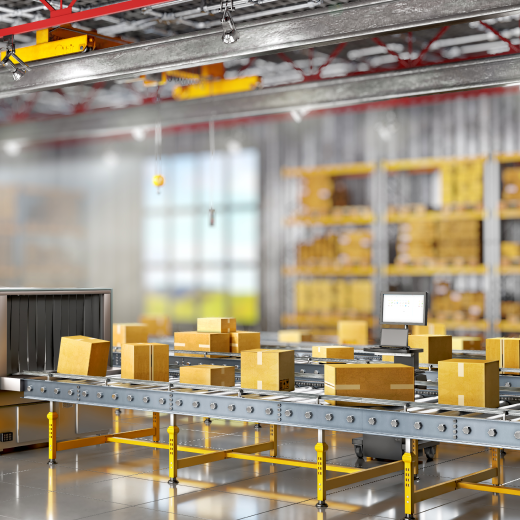 A comprehensive online retailer built digital fulfillment centers (DFCs) in six offline stores to enhance sales competitiveness. By applying a model that automated some parts of the picking, sorting, and delivery process to each of brick-and-mortar stores, they were able to offer their customers "same-day delivery“, and "fresh delivery" (delivery within 2 hours of their neighborhood), as well as their first "drive-through" pickup service. Through Miracom's logistics automation, the customer has been able to speed up their work, minimize misclassification, and enhance their work efficiency.
A comprehensive online retailer built digital fulfillment centers (DFCs) in six offline stores to enhance sales competitiveness. By applying a model that automated some parts of the picking, sorting, and delivery process to each of brick-and-mortar stores, they were able to offer their customers "same-day delivery“, and "fresh delivery" (delivery within 2 hours of their neighborhood), as well as their first "drive-through" pickup service. Through Miracom's logistics automation, the customer has been able to speed up their work, minimize misclassification, and enhance their work efficiency.
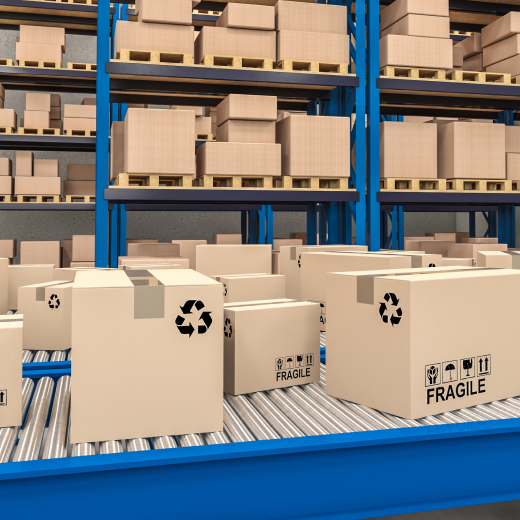 A domestic company specializing in manufacturing industrial fasteners was planning to relocate its product warehouse to a new site. Due to the nature of the product, high proportion of heavy goods made worker fatigue high and low storage efficiency low. There was issues that efficiency got lower due to paper-based logistics operations. In addition, the new site required about twice the storage volume as the current one in a limited space, so we proposed and built a stacker crane- a u t o m a t e d warehouse optimized for the customer's operation. This allowed them to maximize storage within their footprint, allowing for faster warehousing and releasing flow and enabling flexible logistics operations
A domestic company specializing in manufacturing industrial fasteners was planning to relocate its product warehouse to a new site. Due to the nature of the product, high proportion of heavy goods made worker fatigue high and low storage efficiency low. There was issues that efficiency got lower due to paper-based logistics operations. In addition, the new site required about twice the storage volume as the current one in a limited space, so we proposed and built a stacker crane- a u t o m a t e d warehouse optimized for the customer's operation. This allowed them to maximize storage within their footprint, allowing for faster warehousing and releasing flow and enabling flexible logistics operations

